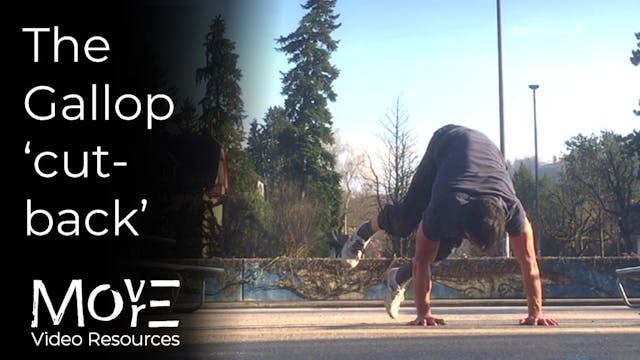The fundamental 'Gallop' & transitions
Quadrupedal patterns & conditioning
•
3m 19s
THE WHAT:
A fundamental quadrupedal locomotion pattern for lateral (side-to-side) movement in space. In the initial variations of the basic pattern (without turns), it serves primarily as a CONDITIONING drill (namely overhead straight-arm strength/SAS pressing), as the hips are lifted as HIGH AS POSSIBLE on every step and maximal load given into the shoulders/arms. Maintaining this intention consistently throughout practice, maximally PUSHING through the floor on each step to stabilise the shoulders, will help develop this strength over time.
LEARN MORE (subscriber-only):
https://drive.google.com/file/d/1UKLhGS3c7MalKsUV5uQmhNBhqs71ivjc/view?usp=drive_link
_______________________________
For programming, guidance, & support for your physical practice:
FREE fundamental prehabilitation program: https://www.movemoremp.com
Online Support (1 to 1 coaching): https://movemoremp.com/onlinesupport
Elements (standardised programs): https://www.movemoremp.com/elements
[email protected]
Up Next in Quadrupedal patterns & conditioning
-
The Gallop ‘insert’
THE WHAT:
A fundamental quadrupedal locomotion pattern revisited with added intention & quality. Note that, whilst travelling laterally, the pattern begins with a partial ROTATION into the direction of travel. This quality makes it more conducive to integration with other rotational quadrupedal p... -
The Gallop "cut-back" transition
THE WHAT:
A simple transition for the fundamental 'Gallop' quadrupedal locomotion pattern which allows for an immediate return in the direction from which one came. As it requires a swift, mid-air "cut-back" to execute, the practitioner should already have the patterning & capacity to experience ... -
The ‘Table Walk’ conditioning pattern
THE WHAT & HOW:
A fundamental, supine locomotion pattern which, whilst following the same coordination as the basic 'Crab walk', emphasises the range of shoulder-extension (i.e. arms behind the body's mid-line) used by keeping the hips as HIGH as possible. For this reason, in its isolated practic...



